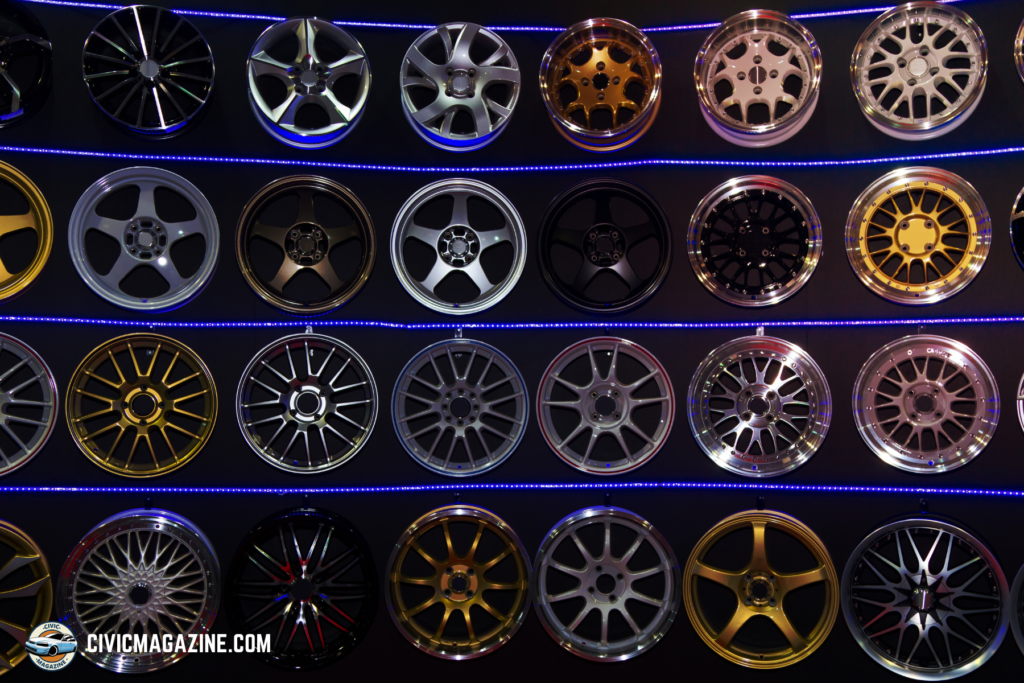Navin has spent much of his studying and working life in multiple countries. Including Dubai, Canada, Italy and India. With a B.Tech in Automobile Engineering...
For those interested in learning about the different types of aftermarket wheels, we share with you some of the basics.
OEMs (Original Equipment Manufacturers) normally supply their base model cars and trucks with what are steel wheels (also called “steelies”). Primarily because of the strength and durability that steel offers when balanced with its cost of production. Given their basic design appearance, hubcaps or covers are then placed on top of the steel wheels to give them an improved look. The drawback of using such wheels is their weight, which results in added inefficiencies for a given vehicle.
As a result, over the years alloy wheels were developed to help offer reduced weight, a variety of designs to choose from and in many cases enhanced handling and performance characteristics too. This individualisation for customers grew in popularity and resulted in private companies creating what we now know to be “Aftermarket Wheels“. Check out some examples of available JDM Aftermarket wheels here.
Types of Aftermarket Wheels
These are the 5 basic types of aftermarket wheels available commonly:
Steel
The most basic type of wheel is made from Steel. Steel on the outside and inside, these are very durable, low on cost and for earlier hot rods, easily applied with chrome for a unique finish. The trouble with these traditional types of wheels is their significant weight and limited design range.
Alloy
Easily the most versatile of aftermarket wheels for a few reasons. It is lightweight, strong, has a wide design range and improves handling and performance. Typically available as Aluminum alloys or Magnesium alloys, these are easily the most popular aftermarket wheels given their positive attributes.

Forged
Forging is the process of putting metal under extremely high pressure and temperature. This improves the density within the wheel and thus making it extremely strong while also being light.
Multi-Piece
Multi-piece rims are made while combining two or three individual pieces of the wheel together. The benefit here lies in achieving the perfect fit for your car. However, depending on the construction, the fact that they are two or three pieces causes concern for its safety during high-performance application.
Carbon Fiber
For those of you unfamiliar, Carbon Fiber is a more recent addition to the automotive world. Well-known for its application in aerospace, this material has made its way into high-performance Formula 1 racing car components and, more recently, mainstream production cars. Its high stiffness and tensile strength while remaining extremely light make for very appealing applications. Adding to its list of components is a carbon fiber rim, well known for its lightweight and rigid construction.
A significant disadvantage though with carbon fiber is if they get damaged, unlike steel wheels, they cannot be repaired. They must be replaced, and as a result, can become very costly. This could perhaps also be why it is taking longer for its adoption into mainstream aftermarket wheels.
Benefits of Aftermarket Wheels
Listed below are just some of the benefits of using aftermarket wheels:
Lightweight
Weight on a car affects its fuel economy and handling characteristics, particularly with performance vehicles. Improving these are aftermarket wheels that are made from lighter alloys such as Aluminium and Magnesium. In some truly high-performance cases, carbon fiber rims are a preferred choice, even if costly.
Design Variety
Unlike the traditional steel wheels with the same basic design and pattern, alloy wheels can be cast or forged showcasing a variety of designs. This appeals especially to enthusiasts looking to personalize their ride and enjoy a bit of attention when driving around town.
Performance & Handling
Bearing the bulk of a car’s weight the wheel and tires that are integrated with the steering and suspension. Given this integration of components, the performance and handling are significantly affected by more weight. Using lighter aftermarket wheels helps minimize these effects without compromising on safety and performance.
Longevity
Given aftermarket wheels are potentially used for higher-performance applications, one might assume they don’t have the longevity that traditional OEM wheels offer. While this might be the case sometimes, with routine maintenance and looking after, the life of aftermarket wheels can match and even exceed the life of traditional OEM wheels.
Picking the best aftermarket wheels
Easily helping improve the looks of your ride, aftermarket wheels are a great starting point. But this also means having to choose what is best for your car. To help narrow your selection, it is best to consider the preferred application (racing, off-road, style, etc..) and then choose a preferred material before further choosing your ideal design.
An additional note is to always consider the safety elements of quality, fit and finish of the selected rims. Ideally, you will choose a preferred manufacturer of aftermarket rims to ensure you always enjoy a smooth and enjoyable drive all the time.

Navin has spent much of his studying and working life in multiple countries. Including Dubai, Canada, Italy and India. With a B.Tech in Automobile Engineering and Management(Canada) and an M.B.A in Design, Fashion and Luxury Goods(Italy), Navin has added varied work experience with globally renowned brands including Mercedes-Benz Canada and Ferrari/Maserati India. While he runs a fashion brand with his wife called The Kaftan Company, his passion for all things automotive continues as the Founder and Managing Editor of an automotive site called Luxury Motor Press. Residing in Hyderabad, India, Navin enjoys the challenges of entrepreneurship, the beauty of being a father to his two sons and pursuing his passion for all things automotive with a bit of tennis and Formula 1 for good measure.